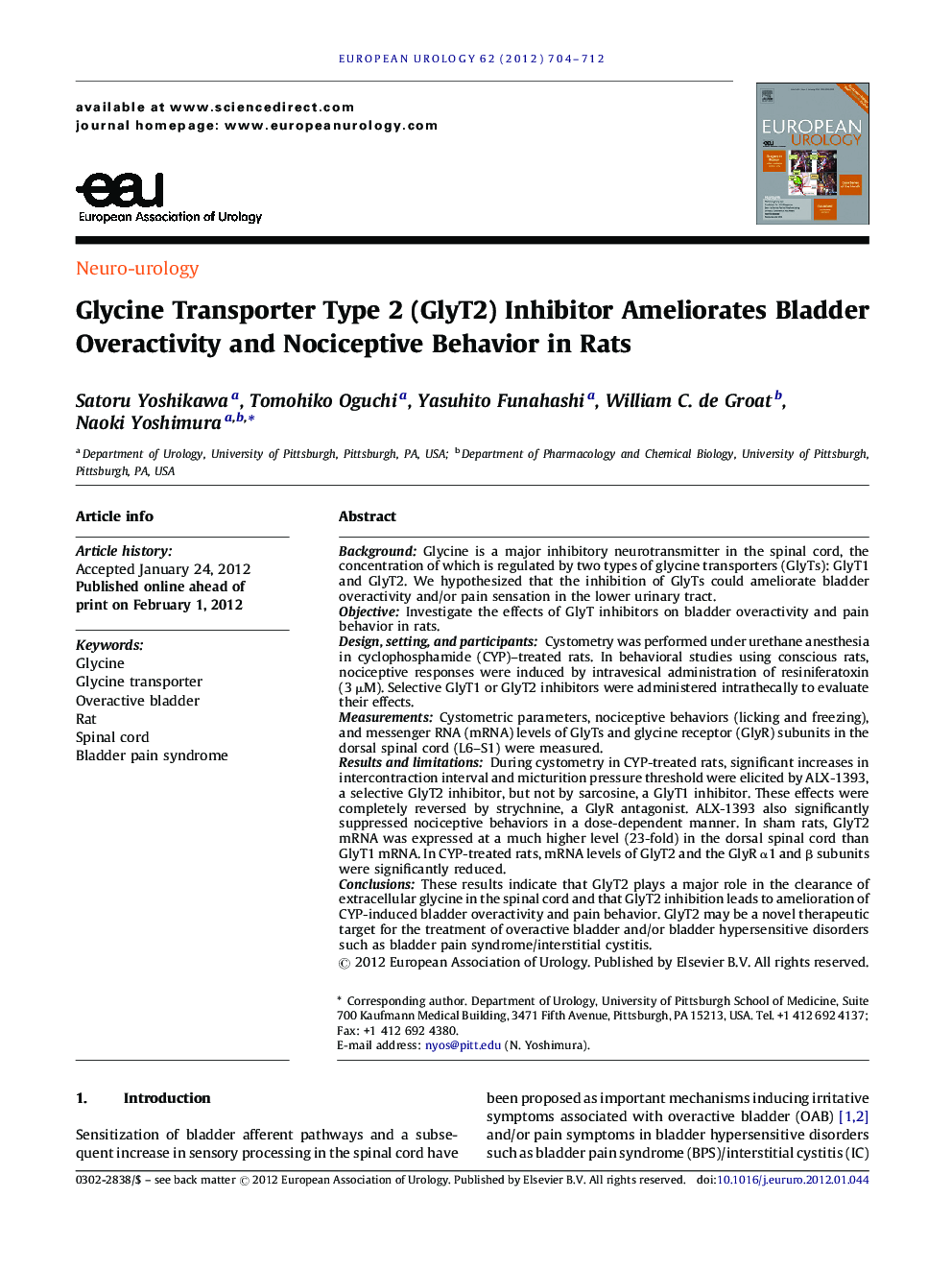| کد مقاله | کد نشریه | سال انتشار | مقاله انگلیسی | نسخه تمام متن |
|---|---|---|---|---|
| 3924014 | 1253087 | 2012 | 9 صفحه PDF | دانلود رایگان |

BackgroundGlycine is a major inhibitory neurotransmitter in the spinal cord, the concentration of which is regulated by two types of glycine transporters (GlyTs): GlyT1 and GlyT2. We hypothesized that the inhibition of GlyTs could ameliorate bladder overactivity and/or pain sensation in the lower urinary tract.ObjectiveInvestigate the effects of GlyT inhibitors on bladder overactivity and pain behavior in rats.Design, setting, and participantsCystometry was performed under urethane anesthesia in cyclophosphamide (CYP)–treated rats. In behavioral studies using conscious rats, nociceptive responses were induced by intravesical administration of resiniferatoxin (3 μM). Selective GlyT1 or GlyT2 inhibitors were administered intrathecally to evaluate their effects.MeasurementsCystometric parameters, nociceptive behaviors (licking and freezing), and messenger RNA (mRNA) levels of GlyTs and glycine receptor (GlyR) subunits in the dorsal spinal cord (L6–S1) were measured.Results and limitationsDuring cystometry in CYP-treated rats, significant increases in intercontraction interval and micturition pressure threshold were elicited by ALX-1393, a selective GlyT2 inhibitor, but not by sarcosine, a GlyT1 inhibitor. These effects were completely reversed by strychnine, a GlyR antagonist. ALX-1393 also significantly suppressed nociceptive behaviors in a dose-dependent manner. In sham rats, GlyT2 mRNA was expressed at a much higher level (23-fold) in the dorsal spinal cord than GlyT1 mRNA. In CYP-treated rats, mRNA levels of GlyT2 and the GlyR α1 and β subunits were significantly reduced.ConclusionsThese results indicate that GlyT2 plays a major role in the clearance of extracellular glycine in the spinal cord and that GlyT2 inhibition leads to amelioration of CYP-induced bladder overactivity and pain behavior. GlyT2 may be a novel therapeutic target for the treatment of overactive bladder and/or bladder hypersensitive disorders such as bladder pain syndrome/interstitial cystitis.
Journal: European Urology - Volume 62, Issue 4, October 2012, Pages 704–712